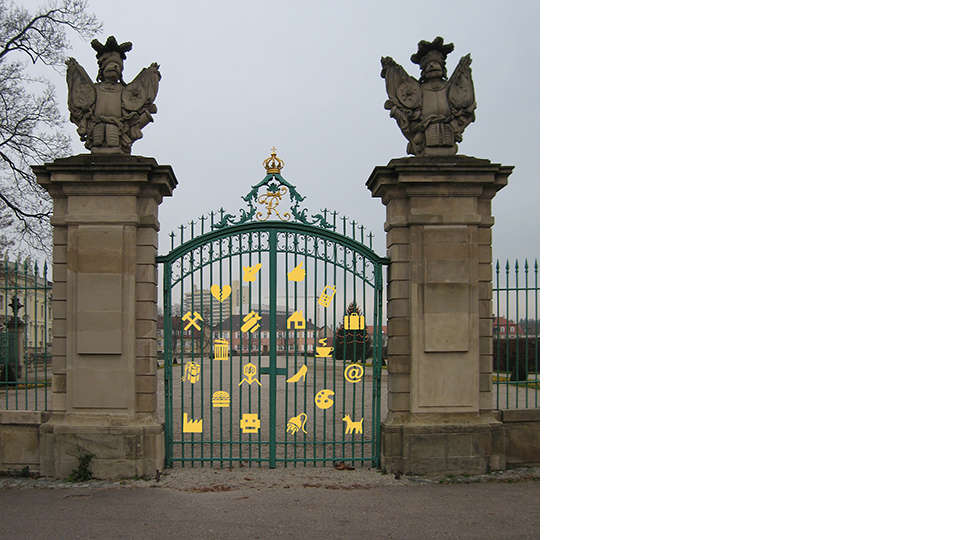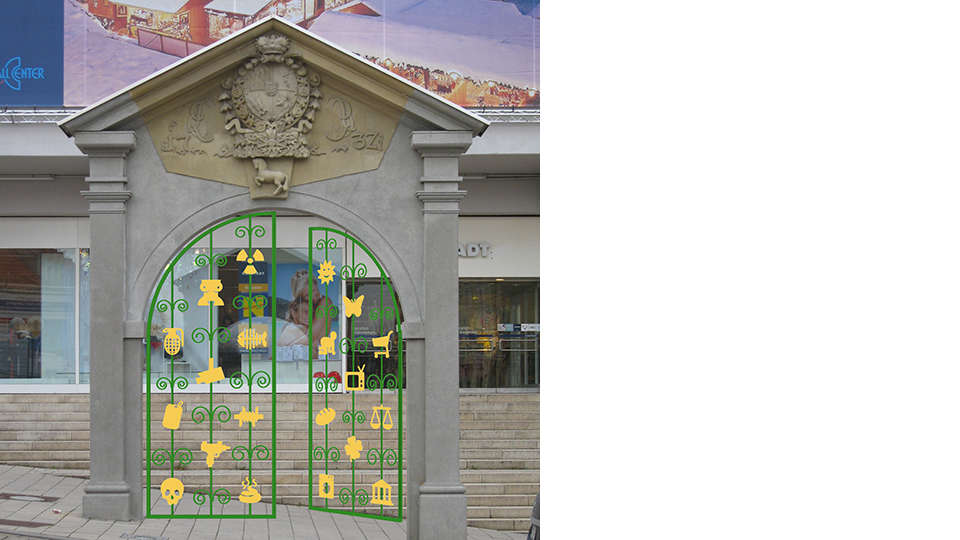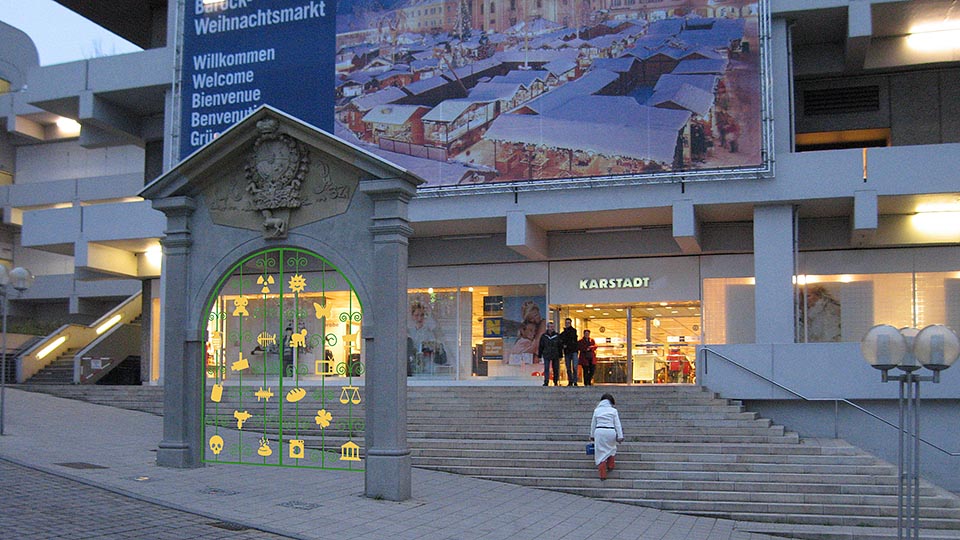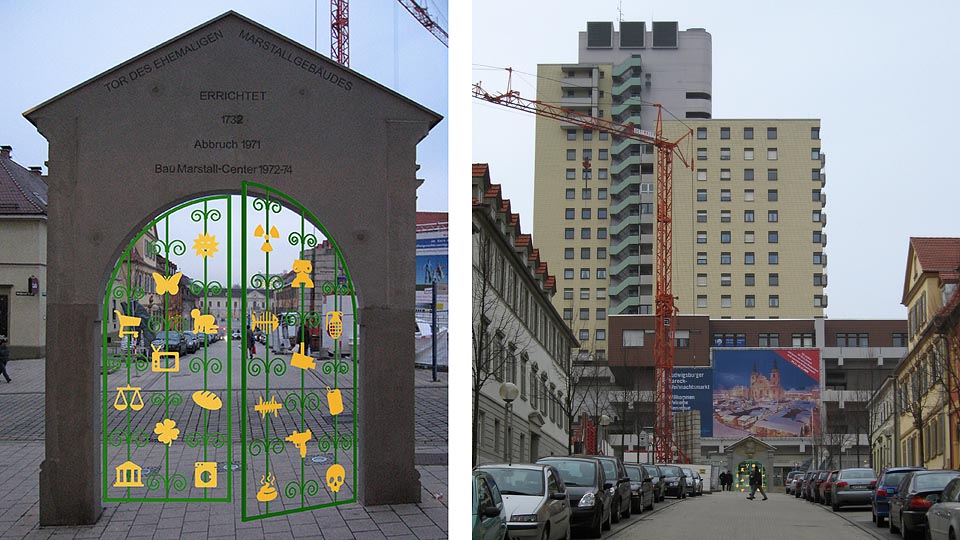Studio Hildebrand
Mag.Art. Christoph Hildebrand
+49 0163 5810594
ch@studio-hildebrand.net




Mag.Art. Christoph Hildebrand
+49 0163 5810594
ch@studio-hildebrand.net








Die Kehrseite der Medaille
Ludwigsburg ist nicht nur, aber vor allem „Schloss und Barockstadt“. Barock wird im Allgemeinen und im Besonderen von Besuchern des Schlosses mit Luxus, Pracht und Lebensfreude assoziiert. Es gibt aber auch eine Kehrseite zum barocken Glanz, nämlich die Bedingungen unter denen diese zweifellos großartige Kulturleistung zustande kam. Wie Andrea Hahn im Vorwort zu „Ludwigsburg – Stationen einer Stadt“ schreibt, „haben die Württemberger Ludwigsburg gehasst, hatten sie doch für den Bau der Residenzstadt, die den Allmachts-Träumen eines absolutistischen Herrschers entsprangen, zu bluten“.
Prinzipiell hat sich bis heute an den Mechanismen der Macht nichts geändert. Wo es Gewinner gibt, sind auch Verlierer. Das gilt für die Belle-Epoque vor dem Hintergrund der Industrialisierung im Deutschland des 19. Jahrhunderts ebenso wie heute für den Wohlstand der westlichen Welt, der auf der Ausbeutung billiger Arbeitskräfte aus den Dritte-Welt-Ländern im globalen Wettbewerb basiert.
Wolf im Schafspelz
Der Entwurf nutzt in subversiver Weise die Attraktivität barocker Ästhetik, um diese Dichotomie an zwei Ludwigsburger Baudenkmälern zu thematisieren und öffnet damit auch ein Tor von der Vergangenheit in die Gegenwart.
Das Marstalltor wird mit zwei neuen Torflügeln wieder vervollständigt. Der rechte Flügel zeigt in Blattgold gefasste Piktogramme, die Aspekte eines Lebens im Wohlstand zeigen: Essen, Konsum, Gerechtigkeit, Kultur, Glück, Bequemlichkeit, schöne Natur. Der linke Flügel zeigt in gleicher Optik die Geiseln der Zivilisation: Vergiftete Umwelt, Krieg, Terrorismus, Krankheit, Hunger, Müll, Ausgrenzung und Überwachung. Will man das Tor passieren, muss man zwischen beiden „Welten“ hindurch. Es gibt das eine nicht ohne das andere.
Bei Interesse lässt sich das Konzept auf ein oder zwei zusätzliche Tore erweitern: das Tor zum Schlossgarten und der Haupteingang zum Schloß. So ließen sich innerhalb des Skulpturenparcours die beiden Pole Ludwigsburgs zusammenschließen und weitere Aspekte der Intervention würden sichtbar: Steht doch das Marstalltor im Dialog mit den demokratischen Banalitäten unserer Zeit (Wohnanlagen, Kaufhaus) und die Tore am Schlossgarten im Dialog mit absolutistischer Hochkultur.
Subversives Gold
Der barocke Kultur suchende und erwartende Ludwigsburger Passant wird vom Gold verführt – und vielleicht auch gegen seine ursprünglichen Absichten – mit den Bedingungen und Widersprüchen des Lebens im 21. Jahrhundert konfrontiert, die in verwandter Form auch schon der Hochkultur des 18. Jahrhunderts zugrunde lagen. In der Dichotomie liegt eine weitere Verbindung zu dieser Zeit. Viele barocke Kunstwerke thematisierten in allegorischer Form, wie etwa bei Mars und Venus, die Gegen-satzpaare von Leben und Tod oder Krieg und Frieden. Der Barock liebte auch aufwändige schmiedeeiserne Tore. Türen und Tore bilden seit langem einen wichtigen künstlerischen Topos, bekannte Beispiele sind die berühmten Renaissance-Türen am Florentiner Dom oder das Höllentor von Rodin. Das Marstalltor ist eine aktuelle Interpretation dieses Sujets.
//
The other side of the coin
Ludwigsburg is not only, but above all, a „palace and baroque city“. Baroque is associated with luxury, splendour and joie de vivre in general and by visitors to the palace in particular. But there is also a flip side to baroque splendour, namely the conditions under which this undoubtedly magnificent cultural achievement came about. As Andrea Hahn writes in the preface to „Ludwigsburg – Stations of a City“, „the people of Württemberg hated Ludwigsburg because they had to bleed for the construction of the residential city, which was the product of an absolutist ruler’s dreams of omnipotence“.
In principle, nothing has changed in the mechanisms of power to this day. Where there are winners, there are also losers. This is just as true for the Belle Epoque against the background of industrialisation in 19th century Germany as it is today for the prosperity of the Western world, which is based on the exploitation of cheap labour from Third World countries in global competition.
Wolf in sheep’s clothing
The design subversively uses the attractiveness of baroque aesthetics to thematise this dichotomy in two Ludwigsburg architectural monuments, thus also opening a gateway from the past to the present.
The Marstall Gate is completed again with two new gate wings. The right wing shows pictograms set in gold leaf, which show aspects of a life of prosperity: Food, Consumption, Justice, Culture, Happiness, Comfort, Beautiful Nature. The left wing shows the hostages of civilisation in the same look: poisoned environment, war, terrorism, disease, hunger, rubbish, exclusion and surveillance. If you want to pass through the gate, you have to pass between both „worlds“. There is not one without the other.
If there is interest, the concept can be expanded to include one or two additional gates: the gate to the palace garden and the main entrance to the palace. In this way, the two poles of Ludwigsburg could be connected within the sculpture parcours and further aspects of the intervention would become visible: after all, the Marstall Gate stands in dialogue with the democratic banalities of our time (housing estates, department stores‘) and the gates at the palace garden stand in dialogue with absolutist high culture.
Subversive Gold
The Ludwigsburg passer-by seeking and expecting baroque culture is seduced by gold – and perhaps against his original intentions – and confronted with the conditions and contradictions of life in the 21st century, which in a related form also underlay the high culture of the 18th century. In the dichotomy lies another connection to this period. Many baroque works of art thematised the opposing pairs of life and death or war and peace in allegorical form, such as Mars and Venus. The Baroque also loved elaborate wrought-iron gates. Doors and gates have long been an important artistic topos, well-known examples being the famous Renaissance doors at Florence Cathedral or Rodin’s Gates of Hell. The Marstall Gate is a contemporary interpretation of this subject.
P R O P O S A L Competition Jubiläum 300 Jahre Stadtgründung Ludwigsburg 2009 + D E S I G N stainless steel / gold leaves / 20 pieces + S U P P O R T Kunstverein Ludwigsburg + M E D I A 4 images © Christoph Hildebrand + T A G S Sculpture / Proposal / Urban / +
